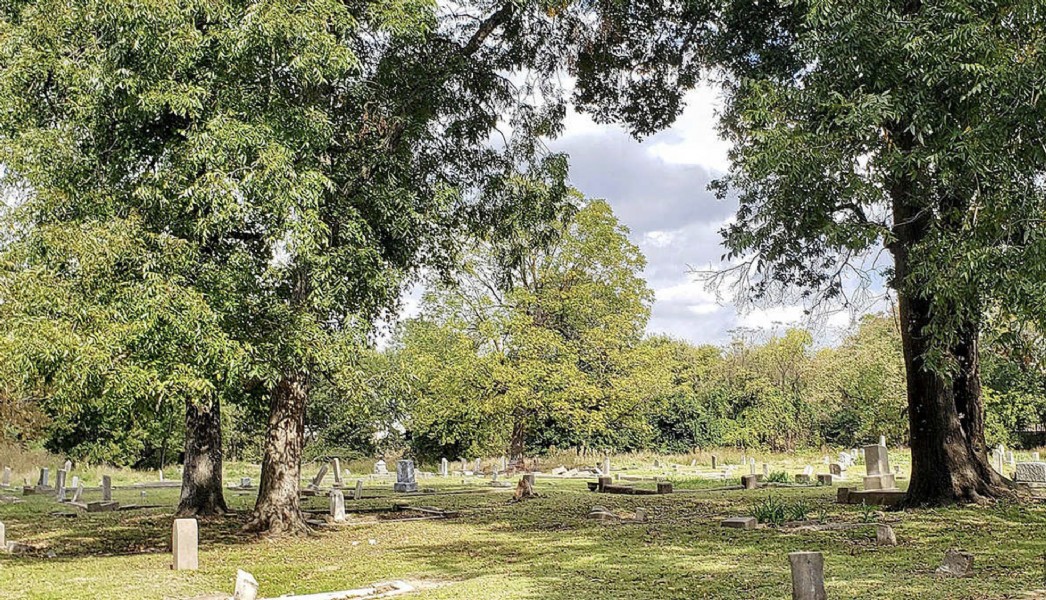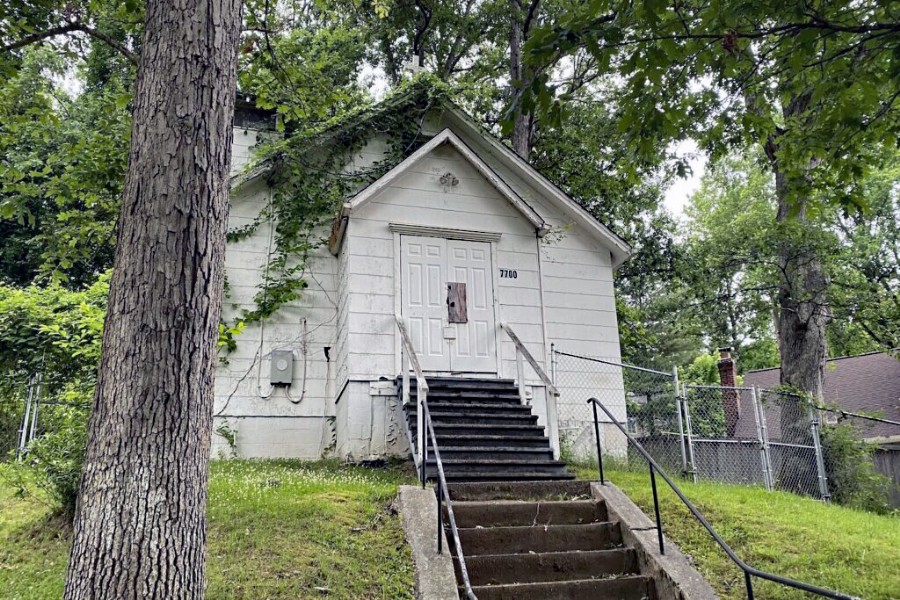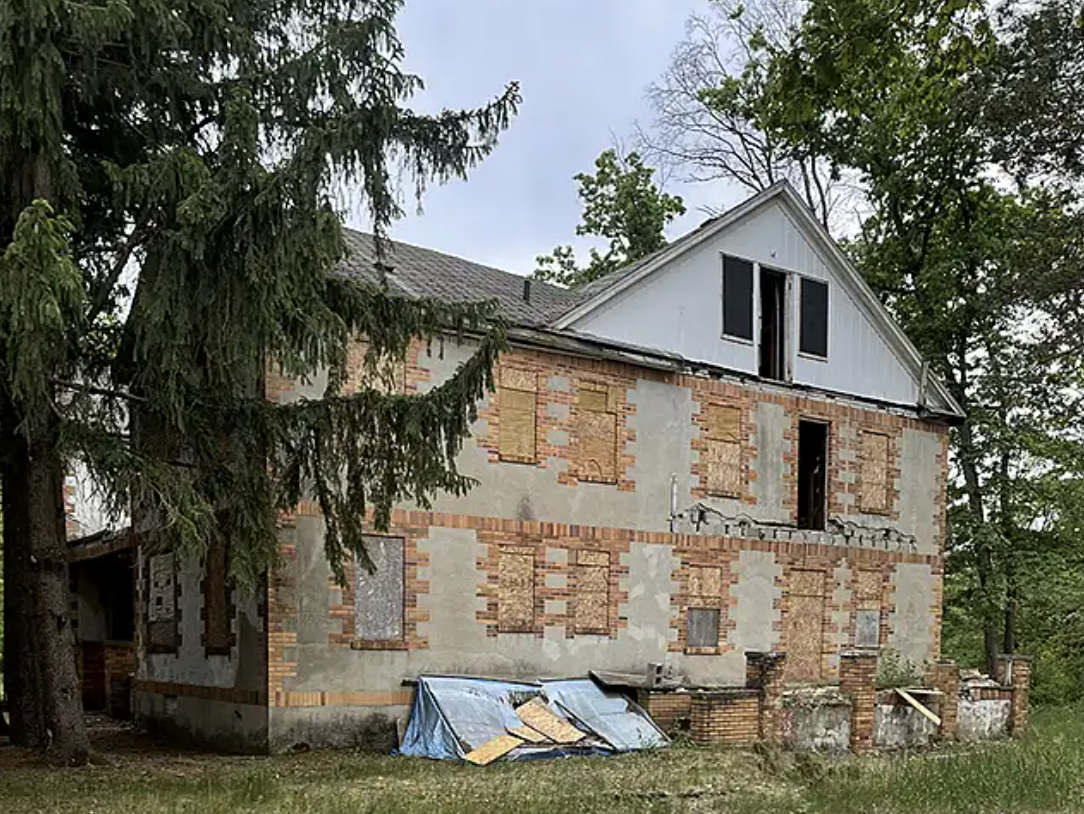
Olivewood Cemetery - Houston, Texas
Incorporated in 1875, Olivewood Cemetery in Houston, Texas, is one of the oldest-known platted African American cemeteries in Houston, with more than 4,000 burials on its 7.5-acre site. The final resting place of many notable figures in Houston's early African American community and of formerly enslaved Africans, this Texas Historic Cemetery and UNESCO Site of Memory for the Slave Route Project also illustrates unique African American burial practices developed in pre-Emancipation Black communities, including upright pipes as grave features, the use of ocean shells as grave ornaments, and upside-down or inverted text.
Over time, changing demographics and increased development led to the cemetery's decline and abandonment. Decades of neglect, vandalism, uncontrolled invasive vegetation, and the occasional use of the cemetery as an illegal dumping ground took their toll. But the most persistent threat is the impact of extreme weather events due to climate change. Historic gravesites are being damaged and even lost entirely due to extreme precipitation events that cause erosion as uncontrolled run-off and greater volumes of water move at higher speeds through the bayou adjacent to the cemetery.
The nonprofit Descendants of Olivewood, Inc. formed in 2003 to restore and maintain the cemetery and now has legal guardianship. With the support of an African American Cultural Heritage Action Fund grant in 2021, the organization has undertaken a comprehensive study to clarify the extent of the threat from flooding and erosion, and identify specific protection and mitigation measures, but advocates will need partnerships and funding in order to implement these plans.

Morningstar Tabernacle No. 88 Order of Moses Cemetery and Hall - John Cabin, Maryland
In 1880, the formerly enslaved couple Robert and Sarah Gibson bought property on what is now Seven Locks Road in Cabin John, Maryland. By 1895 nine other black families had joined them in buying land here. Together these families built a self-reliant settlement, called Gibson Grove, later just No. 10.
In 1882, the community organized the first black school in the district. In 1885, it established Morningstar Tabernacle No. 88 of the Order of Moses. This benevolent society helped members in times of need and in death. Its Moses Hall and Cemetery were adjacent to each other. By the 1880s the community was on the church circuit; in 1898 Sarah Gibson gave land to formally establish the Gibson Grove AME Zion Church. The school for the local black children never had a dedicated building; it was alternatively housed in the church and the Moses Hall lodge.
The Moses Hall foundation in Cabin John is the last known surviving remnant of an Order of Moses hall in Montgomery County.

Hotel Casa Blanca - Idlewild, Michigan
Hotel Casa Blanca played a significant cultural role in the historic Black resort community of Idlewild, Michigan. Designed and built by Black architect Woolsey Coombs in 1949, Hotel Casa Blanca served as a premier lodging site for African American travelers, entertainers, entrepreneurs and thought leaders during segregation, and was included in The Negro Motorist Green Book. Known as “Black Eden,” by the 1950s Idlewild drew thousands of annual visitors, and Hotel Casa Blanca hosted performances by legendary African American artists like Louis Armstrong, Count Basie, and Aretha Franklin.
After integration, like many formerly segregated Black resorts, Idlewild experienced lower visitation and economic disinvestment. Today, the historic resort community has a population of around 700 residents, and Hotel Casa Blanca has been vacant and deteriorating for over 30 years.
With hopes of saving the building, the previous owner of Hotel Casa Blanca sold it to 1st Neighbor LLC, a Black woman-led nonprofit. 1st Neighbor plans to rehabilitate the hotel into a bed-and-breakfast including overnight suites, meeting spaces, and a heritage and learning center, and has taken crucial steps towards restoration, including removal of hazardous material and developing architectural plans for reuse.
/Blog/Endangered-African-American-Historic-Sites/Endangered-African-American-Historic-Sites/Remnants-of-Black-church-uncovered-in-Colonial-Williamsburg/?link=1&fldKeywords=&fldAuthor=&fldTopic=0
Thursday, October 7, 2021 • • General
WILLIAMSBURG, Va. (AP) — The brick foundation of one of the nation's oldest Black churches has been unearthed at Colonial Williamsburg, a living history museum in Virginia that continues to reckon with its past storytelling about the country's origins and the role of Black Americans.
The First Baptist Church was formed in 1776 by free and enslaved Black people. They initially met secretly in fields and under trees in defiance of laws that prevented African Americans from congregating.
By 1818, the church had its first building in the former colonial capital. The 16-foot by 20-foot (5-meter by 6-meter) structure was destroyed by a tornado in 1834.
/Blog/Endangered-African-American-Historic-Sites/Endangered-African-American-Historic-Sites/Floods-are-washing-away-Black-history-in-this-Maryland-city/?link=1&fldKeywords=&fldAuthor=&fldTopic=0
Saturday, September 11, 2021 • • General
ANNAPOLIS, MD. — Rita Coates fought a feeling of panic as the water gushed toward the graves.
Coates, a longtime member of the Brewer Hill Cemetery Association, watched a torrent of stormwater wash over this historic African American graveyard last year, erasing the engravings on headstones and the legacies they represented.
"All the water was running through washing away the soil from the graves," Coates recalled in a recent interview with E&E News. "There were some grave markers that were so ruined or messed up that you could not tell the names on them."
Brewer Hill Cemetery is the oldest Black graveyard in Annapolis. It contains the remains of more than 7,000 slaves and freed African Americans who were not allowed to be buried alongside white people.
/Blog/Endangered-African-American-Historic-Sites/Endangered-African-American-Historic-Sites/African-American-gravesites-detected-near-the-Capital-Beltway-will-be-spared-in-roadwidening-plans/?link=1&fldKeywords=&fldAuthor=&fldTopic=0
Thursday, September 9, 2021 • • General
Maryland highway officials committed to avoid a historical African American cemetery when adding toll lanes to the Capital Beltway after 27 "probable" or "possible" unmarked graves were detected along the highway this summer, a state archaeologist said...
/Blog/Endangered-African-American-Historic-Sites/Endangered-African-American-Historic-Sites/Discover-Americas-11-Most-Endangered-Historic-Places-for-2021/?link=1&fldKeywords=&fldAuthor=&fldTopic=0
Monday, June 7, 2021 • • General
Each year, the National Trust for Historic Preservation's America's 11 Most Endangered Historic Places sheds light on important examples of our nation's heritage that are at risk of destruction or irreparable damage. More than 300 places have been listed in its 34-year history, and in that time, fewer than 5 percent of listed sites have been lost.
/Blog/Endangered-African-American-Historic-Sites/Endangered-African-American-Historic-Sites/Virginias-Most-Endangered-Historic-Places-List-2021/?link=1&fldKeywords=&fldAuthor=&fldTopic=0
Tuesday, May 11, 2021 • • General
The 2021 list of Virginia's Most Endangered Historic Places reflects immediate threats to historic places that represent the complexity of our history, issues of equity, climate change and environmental justice, and the meaningful and intrinsic value that places of history provide in our communities.
/Blog/Endangered-African-American-Historic-Sites/Endangered-African-American-Historic-Sites/Black-cemeteries-are-reflection-of-deep-segregation-history/?link=1&fldKeywords=&fldAuthor=&fldTopic=0
Thursday, April 29, 2021 • • General
Black cemeteries are scattered throughout the United States, telling the story of the country's deep past of cemetery segregation.
/Blog/Endangered-African-American-Historic-Sites/Endangered-African-American-Historic-Sites/Historic-Rosenwald-School-Once-Thought-Demolished-is-Found/?link=1&fldKeywords=&fldAuthor=&fldTopic=0
Wednesday, October 7, 2020 • • General
A school building that Preservation Virginia mistakenly thought was lost was recently found. During an ATV ride through the woods of Mecklenburg County, Heather Minter and her family came across a school building near Boydton, Virginia. She provided photographs to Preservation Virginia, and after researching the images and the location, we determined that it was the Shiloh Rosenwald School.
/Blog/Endangered-African-American-Historic-Sites/Endangered-African-American-Historic-Sites/National-Negro-Opera-Company-House-Named-One-Of-The-Most-Endangered-Places-In-US/?link=1&fldKeywords=&fldAuthor=&fldTopic=0
Wednesday, October 7, 2020 • • General
The National Trust for Historic Preservation has announced its annual list of most endangered places. One of the places on the list is the National Negro Opera Company House in Pittsburgh, Pennsylvania.
/Blog/Endangered-African-American-Historic-Sites/Endangered-African-American-Historic-Sites/Church-where-Emmett-Tills-open-casket-drew-worlds-attention-makes-list-of-endangered-historic-places/?link=1&fldKeywords=&fldAuthor=&fldTopic=0
Monday, October 5, 2020 • • General
Roberts Temple Church of God in Christ in the Bronzeville neighborhood of Chicago has severe structural issues, according to the National Trust for Historic Preservation.
The South Side church where 14-year-old Emmett Till's battered body was displayed in an open casket, lighting fire to the Civil Rights Movement, was designated one of America's 11 Most Endangered Historic Places on Thursday, an annual list that brings preservation support.
/Blog/Endangered-African-American-Historic-Sites/Endangered-African-American-Historic-Sites/Indianas-Top-10-List-of-Endangered-Historic-Structures-for-2020/?link=1&fldKeywords=&fldAuthor=&fldTopic=0
Monday, August 31, 2020 • • General
A preservation group's annual list of Indiana's most endangered historic structures is out. The list includes two schools that provided unprecedented learning opportunities to African Americans - Gary Roosevelt High School in Gary, Indiana and Union Literary Institute in Union City, Indiana.


